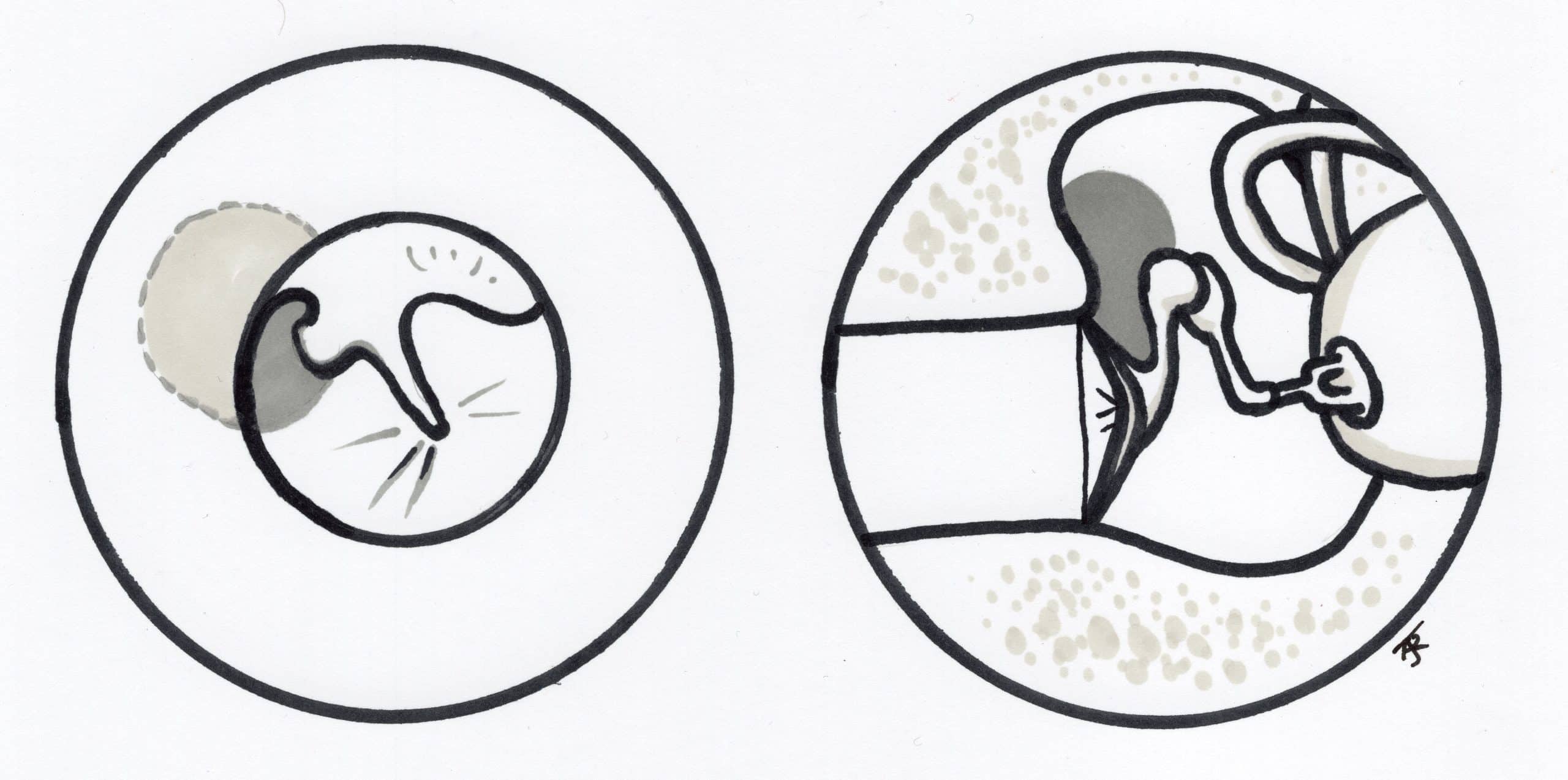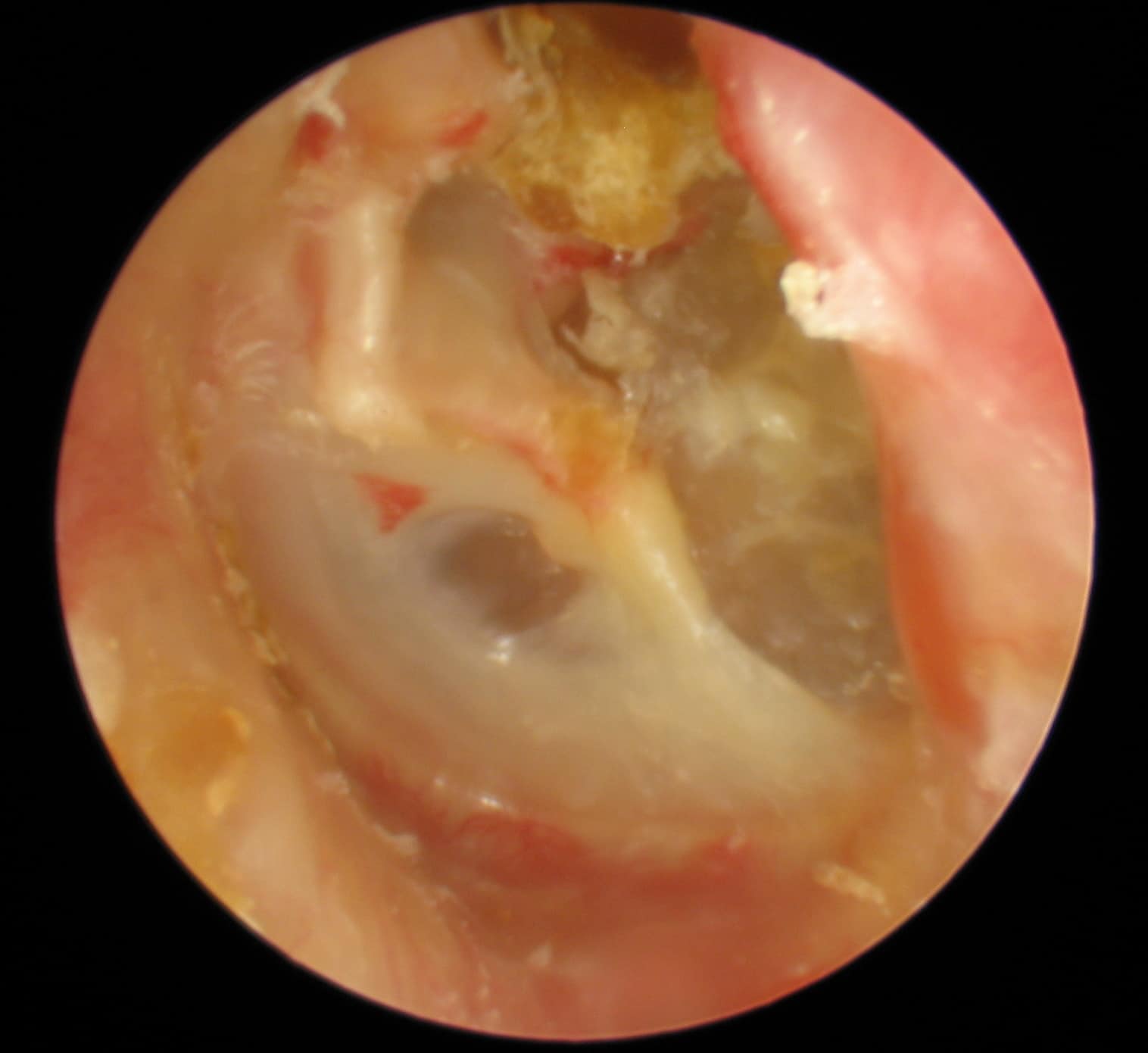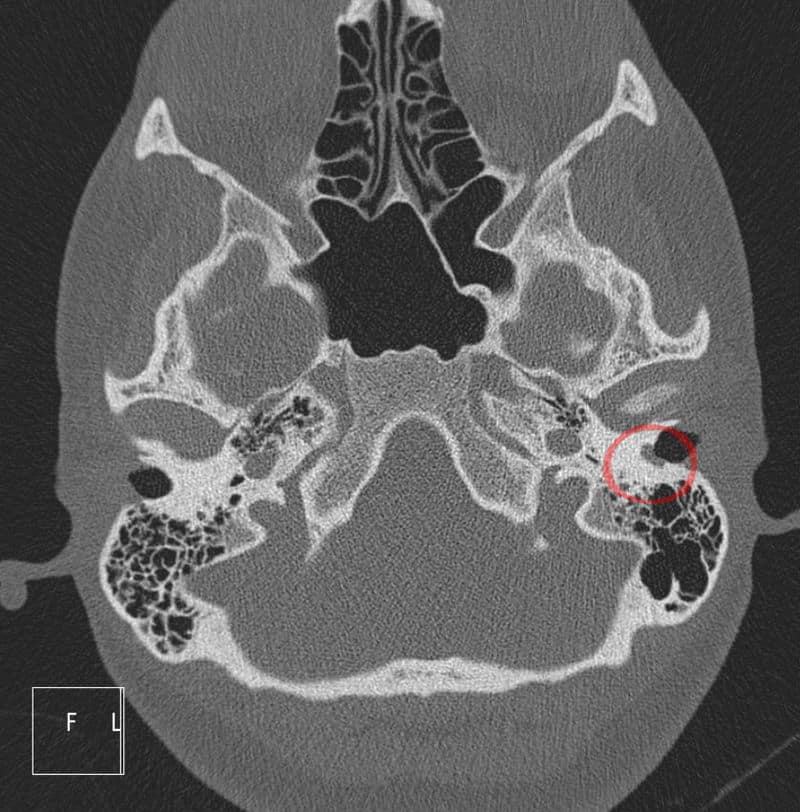Introduction
Chronic otitis media (COM) is an inflammatory disorder of the middle ear. It is characterised by persistent or recurrent ear discharge.
Most classifications now separate chronic otitis media into two distinct types:
- Squamous – occurs due to retraction of the tympanic membrane and is associated with the formation of cholesteatoma
- Mucosal – occurs due to tympanic membrane perforation and subsequent inflammation of the middle ear mucosa due to infection; it is also known as chronic suppurative otitis media
In this article, we shall look at the risk factors, clinical features, and management of chronic squamous otitis media.
Pathophysiology
Squamous chronic otitis media can be congenital* or acquired, however the majority are acquired.
In acquired disease, the precise pathophysiology is unknown, with multiple theories. The most popular theory is that cholesteatoma result from chronic negative middle ear pressure from Eustachian tube dysfunction.
Due to negative middle ear pressure, the tympanic membrane is retracted inwards. This results in a retraction pocket (Fig 1). These pockets are initially self-cleansing, but some may narrow and trap keratinised squamous cell debris which accumlates with time, leading to the formation of a cyst-like structure which may evolve into a cholesteatoma (Fig. 2).
*Congenital disease is seen in patients with no history of ear surgery, and no perforation or retraction of the tympanic membrane; indeed congenital cholesteatomas represent epidermoid cysts within the middle ear cavity

Figure 1 – Schematic demonstrating potential positioning of a pocket, which may lead to collection of keratin debris in the pocket, leading to cholesteatoma
Thus, ‘cholesteatoma’ is a misnomer as there is no cholesterol or tumour-like process in the disease. However, the presence of super-added infection on the debris may lead to a purulent discharge.
It is not possible to predict with certainty which pockets will go on to form a cholesteatoma, those in the ‘attico-antral’ (postero-superior) aspect of the tympanic membrane are thought to be high-risk, whereas those in the ‘tubotympanic’ (antero-inferior) aspect are thought to be low-risk.

Figure 2 – A cholesteatoma located in the attic, as seen on otoscopy
Cholesteatomas can induce an inflammatory process in the adjacent temporal bone. This may lead to local destruction of the ossicles (resulting in a conductive hearing loss), semicircular canals (leading to vertigo), cochlea (sensorineural hearing loss), and facial canal (facial nerve palsy).
In the most severe cases, there can be erosion into the intracranial cavity, which may cause life-threatening meningitis, intracranial abscesses, and sinus thrombosis.
Risk Factors
Middle ear disease such as recurrent acute otitis media, Eustachian tube dysfunction, and prior otological surgery are all known risk factors for cholesteatoma. The disease also has a more aggressive clinical course in children.
Clinical Features
In the ‘inactive’ phase of the disease, where retraction pockets are made, patients may be asymptomatic.
When cholesteatomas are formed, patients may present a conductive hearing loss. Another common presentation is painless and persistent purulent ear discharge.
Any bony destruction of the cochlea may present with a sensorineural component, whilst other localised bony destruction may result in tinnitus, vertigo, or facial nerve palsy. Importantly, otalgia is not a common feature.
Diagnosis is made clinically during examination whereby a pearly, keratinized, or waxy mass in the attic region is seen on otoscopy (Fig. 2). These are best seen when a perforation of the tympanic membrane is present, providing a window into the middle ear.
Investigation
As part of the workup, all patients should receive a pure-tone audiogram to objectively determine the extent and type of hearing loss. It is also important to establish the hearing thresholds prior to any surgery.
A CT scan of the petrous temporal bone (Fig. 3) must be performed to guide clinical suspicion and for pre-operative surgical planning
Management
The definitive management of a cholesteatoma is surgery, aiming to remove the entire cholesteatoma as otherwise it will recur. This can be either a ‘canal wall up’ or ‘canal wall down’ mastoidectomy.
Most surgical approaches involve creating a mastoid cavity, whereby the cholesteatoma is removed and the mastoid is “cleaned out” by drilling away the air cells. Access to the mastoid is traditionally made using a post-auricular or pre-auricular incision (although increasingly can be accessed endoscopically).
The ossicles can be reconstructed depending on the damage caused by the cholesteatoma. The aim of surgery is not to restore hearing but to halt progression of the destructive lesion and create a ‘safe and dry ear’. Patients can then have a concurrent or subsequent procedure of ossiculoplasty if required.
Key Points
- Squamous COM occurs due to retraction of the tympanic membrane and is associated with the formation of cholesteatoma
- Patients will present with a chronically discharging ear, in the absence of fever or otalgia
- Cholesteatomas can be visualised during clinical examination if suspected, and further assessed via CT imaging
- The definitive management of a cholesteatoma is with surgery

